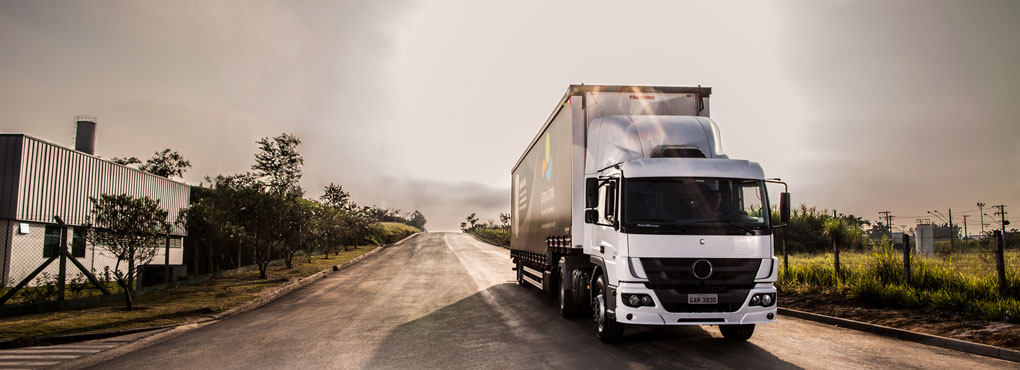GRI 103-2, 103-3 and 306-4
Fundamental to the Campo Limpo System, the logistical model adopted for the disposal of empty packaging or that containing post-consumption leftovers is that of return shipment, which optimizes the process and costs of the System. The same vehicle that delivers the crop protection products from the manufacturer to the farmers, wholesalers and cooperatives transports the empty packaging from the receiving units to the recyclers and incinerators. This concept is adopted in more than 98%1 of the shipments from the central stations to the final destination.
Besides the environmental benefits, this type of shipment reduces costs by around 45%. Additionally, it decreases the number of vehicles in traffic and pollutant emissions. In 2019, the System hauled 12,958 trucks. It is worth pointing out that the transportation of materials considered hazardous waste (unwashed packaging), which have not been submitted to the adequate washing process by farmers and postconsumption leftovers) happens throughout the national territory, in line with the legislation in force. In 2019, 3,165.7 tons of this type of residue were transported.
12,958 trucks hauled and more than 6 million kilometers traveled in 2019.
9,400 vehicles traveled from the outposts to the central stations; and
3,558 vehicles traveled from the central stations to the final destination (recyclers or incinerators).
In terms of safety at the central stations and outposts, all vehicles undergo inspection prior to departure. Vehicle documentation and driver conditions as well as items such as tires, lights, brakes and bail tie-down straps are inspected. The drivers that carry out the hauls are also specialized, thereby increasing the safety of this phase. inpEV also monitors the main carriers that service the System, which contributes to improve the processes and guarantee compliance with the legislation.
Several initiatives seek to optimize the logistics step and make it ever more efficient. One example is the Central Offices Information System (SIC), which allows to manage received packaging volumes and unit inventory and assists in managing the displacement of trucks that service the Campo Limpo System. SIC, which has already been implemented at all central stations, is being extended to the outposts, which will increase the System’s traceability (read more on Innovation & technology). By the end of 2019, more than 150 outposts were already integrated to SIC.
1 This considers the transportation from the central stations to the destination units: recyclers or incinerators. The logistics between the outposts and central stations, with smaller distances and specific logistics needs, are not done using the return shipment model.
COST OF SHIPPING
Along 2019, inpEV participated in public hearings together with the National Confederation of Industries (CNI) to develop awareness among government on the environmental gains generated by the reverse logistics made possible through the Campo Limpo System. The National Policy on Solid Waste (PNRS) itself sets forth the creation of incentives to consolidate reverse logistics systems in the country, with positive impacts to waste management, the environment and public health.
However, the National Agency of Ground Transportation (ANTT) established new rules for charging freight at the start of 2020 and restated the value of the minimum fees per traveled kilometer. Once disregarding the characteristics of the return shipment format when defining such values, the new regulation burdens and penalizes reverse logistics.
